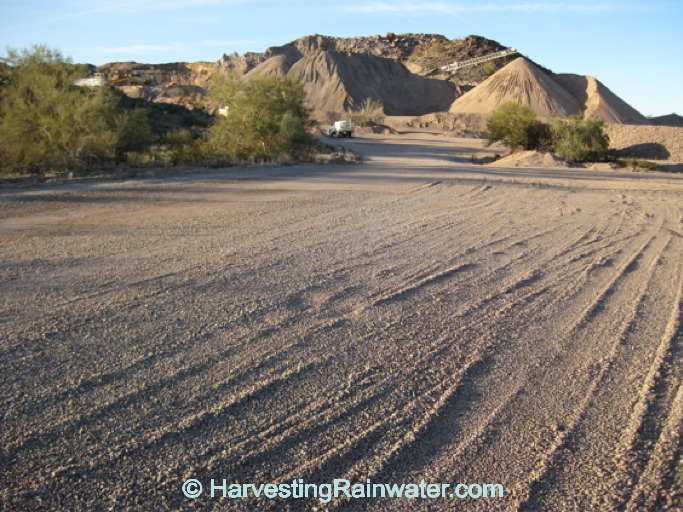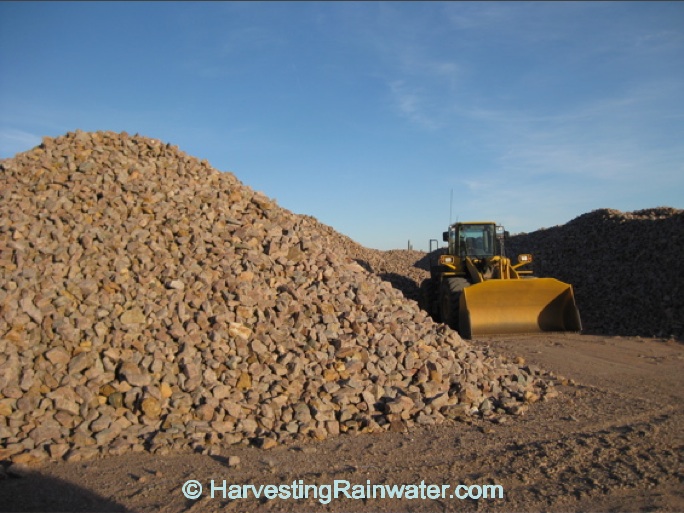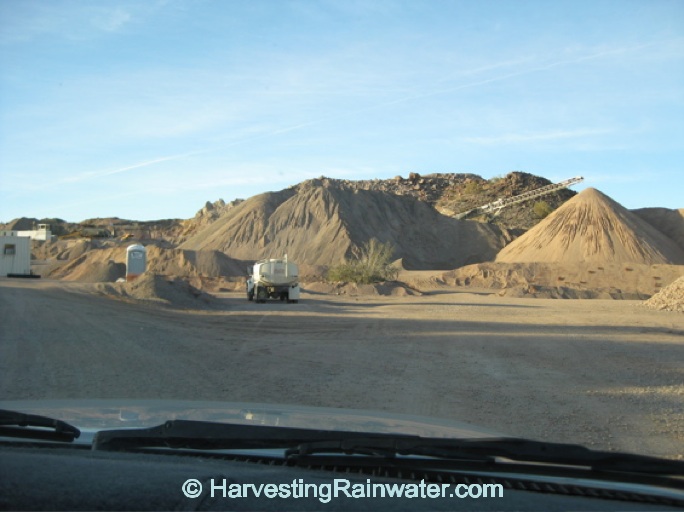Crushed Rock Landscapes–Bandage on a Larger Problem
Thanks to Julia Fonseca for this guest blog sparking up a much needed dialog on the extensive, and often excessive use of crushed rock or decomposed granite in the landscape.
By Julia Fonseca
Urban landscapes using crushed rock or “decomposed granite” (dg) are increasingly common in Arizona. Many of us native plant enthusiasts see use of crushed rock mulches as evidence that local governments and homeowners are realizing that water is too precious to be used on lawns.
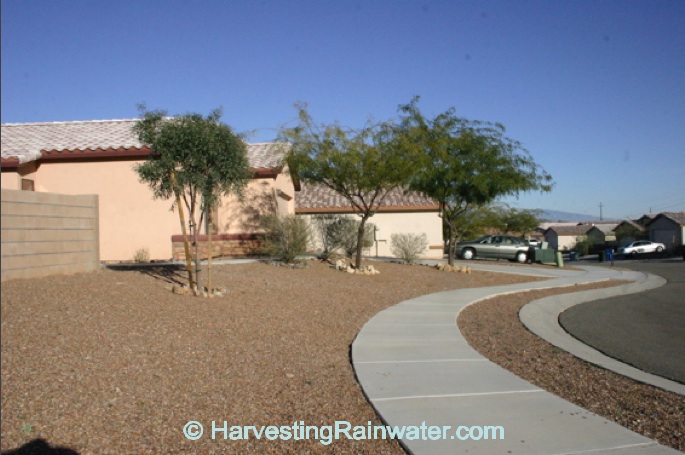
So let’s look a little closer at the practice of using crushed rock landscaping. Where does this stuff come from? Crushed rock is mined from hills around the periphery of Tucson, Phoenix, Yuma, Prescott and other rapidly growing cities. Much of what is advertised as decomposed granite isn’t really granite. I’ve seen crushed quartzite, andesite, and volcanic rhyolite sold, in a wide array of appealing colors. Most of the mines are close to urban areas, because the fossil fuels involved in transporting the rock are a prime driver of the cost.
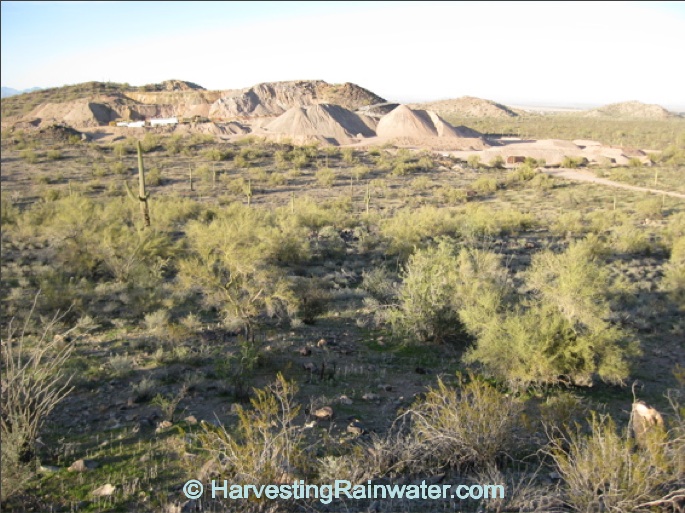
I became aware of the connection between crushed rock and urban landscaping when I found out that someone was digging into a pretty piece of desert near Ragged Top. Here was a real desert rock garden, studded with ancient ironwoods and saguaros, barrel cacti, and palo verde trees, being destroyed so people like me could create fake desert landscapes. Here, the most stable part of the natural landscape, a small outcrop which had for millenia been sloughing actual decomposed granite onto the bajada, was made into a pit that would be hopeless to reclaim during my lifetime without extraordinary use of more fossil fuels and imported materials.
I began to pay attention to what happened with the product. I saw that crushed rock and gravel “lawns” work well to reduce evaporation and conserve soil moisture. Seeds trapped by the rough surface grow up and get established in what had been barren “zeroscapes”. But often the people who apply dg to their yards do not see these new plants as a good thing. They end up applying pre-emergent sprays and herbicides to keep down the weeds.
Seldom is the life-enhancing aspect of such rock mulch being exploited to restore denuded homesites. Instead, it is used more like an aesthetically appealing bandage on an open wound. The homeowner or property manager is then locked into a cycle of grubbing out weeds and applying chemicals, and the wound never heals. Instead of having a cosmetic landscape goal, the goal should be to heal the land.
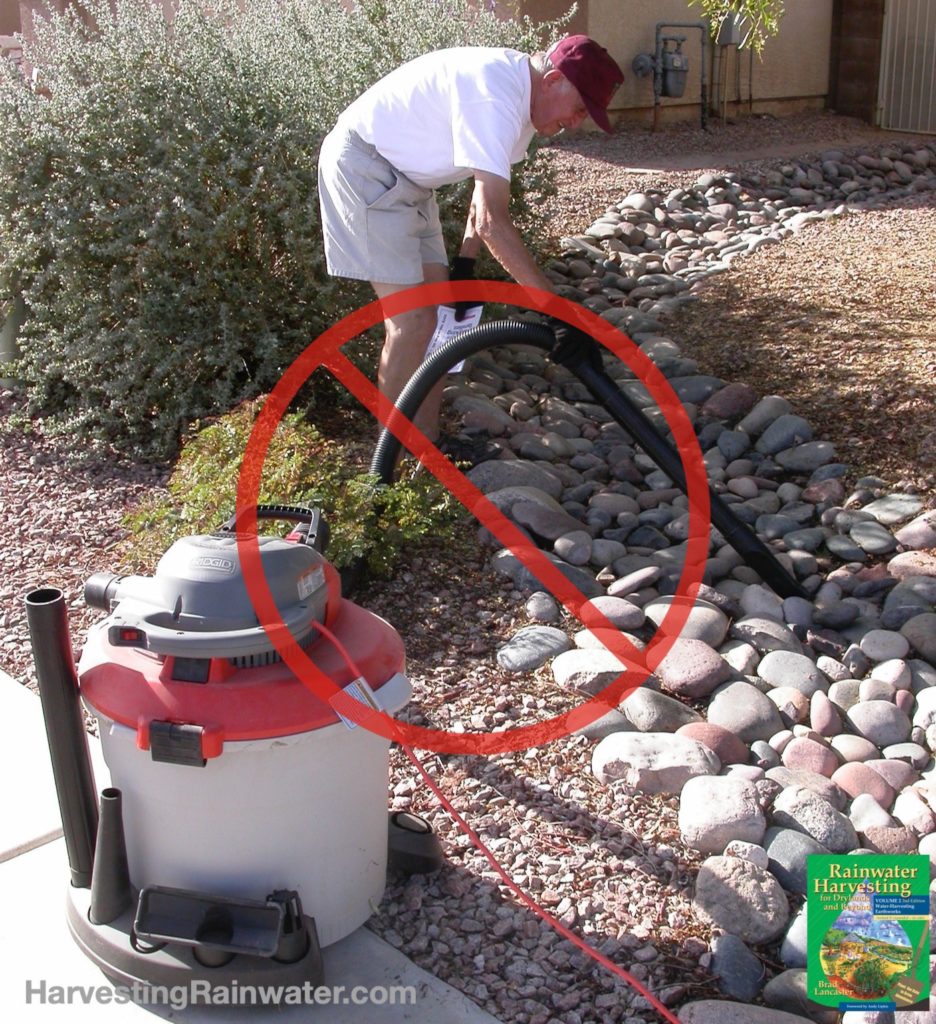
Recent research has detected heavy metals and sulfuric acids leaching out of crushed rock around Las Vegas public schools and into water (Science News: 11/15/03,p. 315). It turns out that some crushed, decorative rock is high in metal sulfides, which may be mobilized during dust storms, irrigation, and heavy rains. I’ve also begun to hear that Roundup and its active ingredient glyphosate, often applied to the dg to keep weeds down, does not break down or get immobilized in the soil as I had previously heard. Roundup can be mobilized into runoff. When dissolved in water, Roundup has been shown to have toxic effects upon fish and tadpoles.
So what is the alternative? There’s no quick and easy answer, but there are answers that use the power of plants and animals and natural energy, available to the patient person.
After we’d lived at our home for 7 years or so, the soil become much more productive of life. We don’t use imported mulch. And we haven’t even dug many swales to minimize soil and water loss. We do leave much of leaf and twig litter to decay in place, and that has helped tremendously to capture the little rain that falls. The trees and shrubs we have nurtured over the years create wind eddies, which cause a rain of leaves and dust to settle into our yard, helping to build our soil.
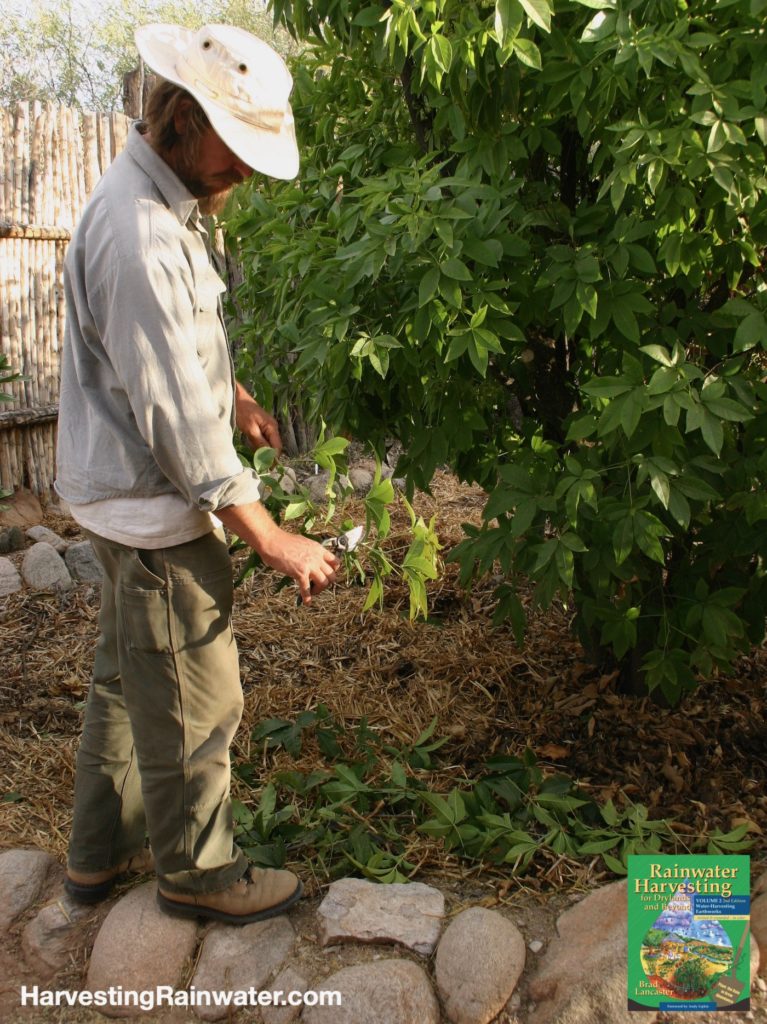
Photo credit: Brad Lancaster
I enjoy the variety of dirt in my urban Tucson yard. It ranges from the calcic B-horizon near the alley to a rich humus layer, an inch thick in places, which has accumulated under the mesquite, palo verde and catclaw trees since we moved in. The curve-billed thrashers are particularly enthusiastic tillers of the soil litter, to the point where some places the weeds just won’t grow. We don’t kill off the ants, so they aerate the soil; the lizards burrow in and out of the leaf, twig and caliche pebble cover that characterizes this urban city lot.
Annual plants that come in on their own can be delightful. Whereas many native wildflowers are a bit fussy and require extra water most years, I’ve had good results in establishing and spreading a native winter annual, Bowlesia. It is a very short groundcover, with delicately attractive bright green leaves. Transplanting it is easy, and it also volunteers on the bare areas. It seems to be as aggressive as the much taller London rocket (Sysymbrium irio).
Best of all, it leaves no stiff stems behind. Plantago is also great, and grows easily from seed. In the summer, we favor the self-seeding native summer groundcovers, such as an annual grama grass, Tidestromia and Boerhavia, and hand-pull non-local, perennial ones, such as bermuda grass and buffel.
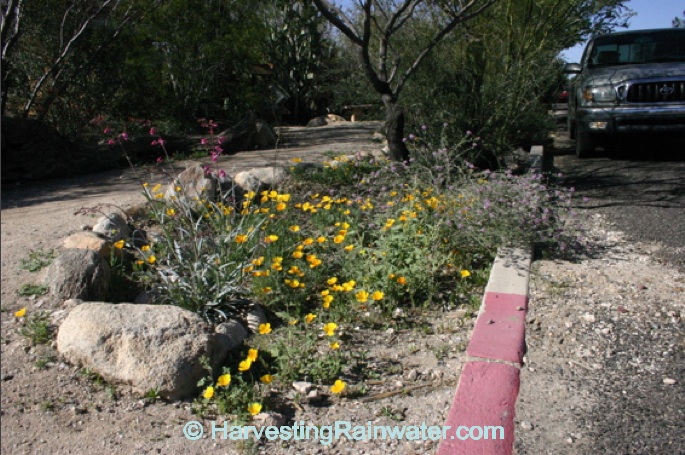
What’s most amazing in that we have seen the development of a microbiotic crust in the front yard! It turns a dark green after a rain. Such crusts can form quickly in Arizona, if there is not too much “hoof” action. This nearly invisble network of micro-organisms holds the bare soil in place during the fiercest winds, and retards or makes difficult the establishment of new seeds. I am excited, not appalled by this “bare” dirt.
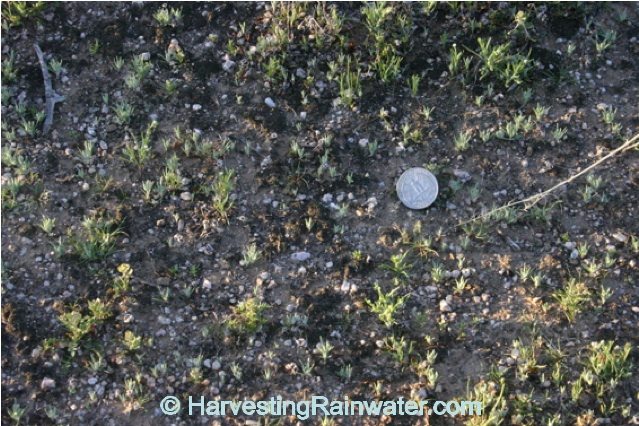
For the quick and easy fix at home, I have to say that the use of river gravel makes more sense to me than crushed rock. Yes, it means somewhere in a floodplain a gravel pit is excavated. But rivers have much greater power to reclaim the damage than do hillslopes and rock outcrops. Even better, how about using native seeds and or cheap, locally available, organic or inorganic mulches to re-establish native plant cover? Swales, branches and other means to slow the passage of wind and water over a landscape may help. More recently, I’ve discovered the power of perennial succulent ground covers like prickly pear and agaves, and non-native aloes to stabilize the soil and provide homes for quail and lizards. Such experimentation with materials and use of energies inherent in a site can be fun and effective. Decomposed granite? No thanks.
